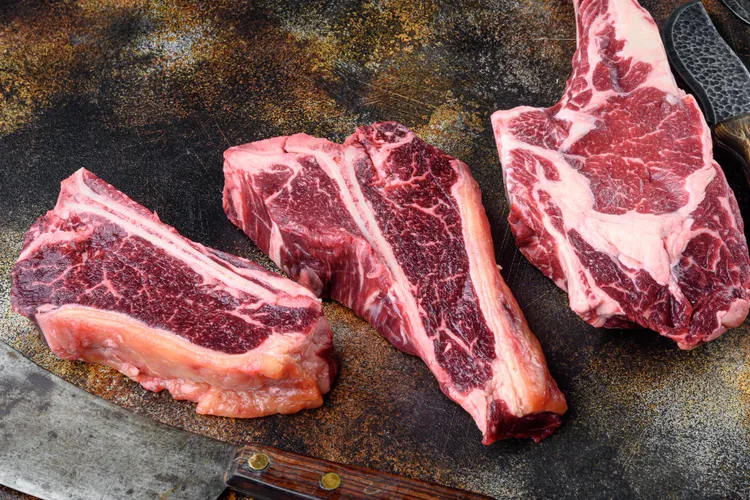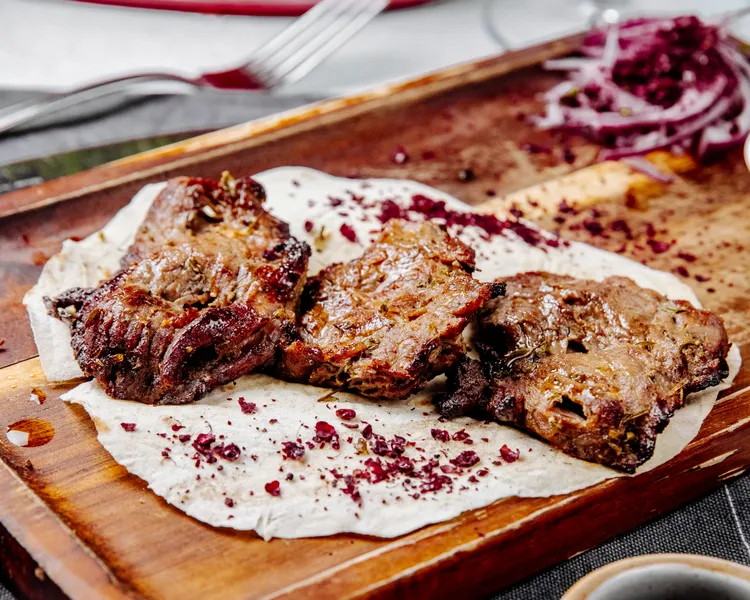The Ultimate Guide to Beef Cooking Styles and Nutrition
Beef is one of the most beloved and versatile proteins in the world. From a sizzling steak on the grill to a slow-simmered stew, beef can be prepared in countless ways that cater to different cultural cuisines, textures, and tastes. But as we indulge in its savory flavors, it’s equally important to understand its nutritional profile and how various cooking methods can impact both flavor and health. Whether you’re a home cook, a foodie, or someone trying to make healthier dietary choices, this guide will walk you through the most popular beef cooking styles and their nutritional implications.

Popular Beef Cooking Styles
Beef's unique texture and marbling make it adaptable to a wide range of cooking methods. Here are some of the most popular:
- Grilling
Overview: Grilling beef, especially steaks and burgers, is a classic method that imparts a smoky, charred flavor.
Best Cuts: Ribeye, T-bone, sirloin, flank, burgers
Nutrition Tips:
- Fat can drip off the meat, slightly reducing the total fat content.
- Over-charring or burning can produce harmful compounds (e.g., HCAs and PAHs), which have been linked to cancer risk. Marinades with herbs and acidic ingredients can reduce this effect.
- Pan-Searing
Overview: A quick and flavorful method that uses a hot skillet, often followed by oven-finishing.
Best Cuts: Filet mignon, NY strip, ribeye
Nutrition Tips:
- Use healthy fats like olive oil or avocado oil.
- Try to avoid high smoke-point oils if cooking at high temperatures for too long.
- Roasting / Oven-Baking
Overview: Dry heat cooking done in the oven, ideal for larger cuts.
Best Cuts: Prime rib, beef tenderloin, chuck roast
Nutrition Tips:
- Allows fat to render off naturally.
- Add root vegetables for a nutrient-dense, one-pan meal.
- Slow Cooking (Crockpot or Dutch Oven)
Overview: Uses low heat over a long time to break down connective tissue, resulting in tender, flavorful meat.
Best Cuts: Chuck, brisket, short ribs, oxtail
Nutrition Tips:
- Great for retaining moisture without added fats.
- Use bone-in cuts to enhance collagen and gelatin, beneficial for joint and gut health.
- Sous Vide
Overview: Precision cooking in a vacuum-sealed bag in temperature-controlled water.
Best Cuts: All steaks, especially tender cuts
Nutrition Tips:
- Retains most nutrients and moisture.
- Minimal need for added oils or fats.
- Broiling
Overview: High, direct heat from above (the oven's broiler), similar to grilling.
Best Cuts: Top sirloin, flank, skirt steak
Nutrition Tips:
- Like grilling, fat may drip off, reducing overall fat content.
- Watch for charring to avoid HCAs.
- Braising
Overview: Combines searing with slow simmering in liquid, often with aromatic vegetables.
Best Cuts: Brisket, shank, short ribs
Nutrition Tips:
- Nutrient-rich broth can be consumed along with the beef.
- Less added fat required due to moisture from the cooking liquid.
- Stir-Frying
Overview: Quick cooking over high heat, often with vegetables and light sauces.
Best Cuts: Flank, sirloin tip, round steak
Nutrition Tips:
- Pair with plenty of vegetables for a balanced, fiber-rich dish.
- Use low-sodium soy sauce and minimal oil for a healthier stir-fry.
Nutritional Profile of Beef
Beef is a nutritional powerhouse, offering a range of essential nutrients—especially when consumed in moderation and prepared thoughtfully.
Key Nutrients in Beef
Nutrient | Benefit |
Protein | Essential for muscle repair and growth |
Iron (Heme) | Supports oxygen transport and prevents anemia |
Zinc | Boosts immune function and wound healing |
Vitamin B12 | Necessary for brain function and DNA synthesis |
Creatine | Improves strength and exercise performance |
Conjugated Linoleic Acid (CLA) | May have anti-inflammatory and fat-reducing effects |
Macronutrient Breakdown (100g cooked lean ground beef ~10% fat)
- Calories: ~250 kcal
- Protein: 26–28g
- Fat: ~17g (with ~7g saturated fat)
- Carbohydrates: 0g
Grass-Fed vs Grain-Fed Beef
- Grass-Fed: Higher in omega-3 fatty acids and antioxidants (like Vitamin E)
- Grain-Fed: Often more marbled and flavorful but lower in beneficial fatty acids
Processed vs Fresh Beef
- Processed Meats: Includes sausages, hot dogs, deli slices—often higher in sodium and preservatives (like nitrates).
- Fresh Beef: Lower in sodium, better nutrient retention, especially when minimally cooked.
Health Considerations
Beef and Heart Health
- Lean beef can be part of a heart-healthy diet.
- Choose cuts like round, sirloin, and loin, and avoid heavily marbled or fatty options for regular meals.
- Trim visible fat before cooking.
Beef and Weight Management
- High-protein meals help promote satiety and muscle retention during weight loss.
- Choose lean cuts and limit calorie-dense cooking styles (deep frying, heavy cream-based sauces).
Healthy Cooking Tips
- Marinate: Use olive oil, citrus juice, vinegar, and herbs to tenderize meat and reduce harmful compound formation during high-heat cooking.
- Portion Control: A healthy portion size of beef is about 3–4 oz cooked (size of a deck of cards).
- Rest Your Meat: Letting meat rest after cooking helps retain juices and enhances flavor.
Beef in Global Cuisines
- Argentina: Famous for asado (grilled beef with chimichurri)
- Korea: Thinly sliced beef in bulgogi and galbi with soy-sesame marinades
- France: Classic beef bourguignon, a red wine braised dish
- India: Beef is less common in Hindu-majority areas but features in dishes like beef curry in Kerala
- United States: Burgers, steaks, meatloaf - beef is a staple of the American diet
Striking a Balance
Beef can be part of a healthy and delicious diet when consumed mindfully. By choosing lean cuts, using healthy cooking methods, and complementing beef with vegetables and whole grains, you can enjoy the best of both worlds - flavor and nutrition.
Key Takeaways:
- Choose lean cuts like sirloin, round, and tenderloin.
- Use lower-fat, nutrient-preserving cooking styles like sous vide, broiling, and roasting.
- Incorporate herbs, spices, and marinades for flavor without excessive salt or fat.
- Balance your weekly protein intake with plant-based options, poultry, and fish for variety and health.









